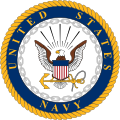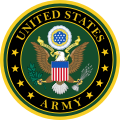| Defense Health Agency | |
|---|---|
 Logo | |
| Active | October 1, 2013 |
| Part of | Military Health System |
| Garrison/HQ | Falls Church, Virginia |
| Website | Official website |
| Insignia | |
| Seal |  |
| Distinctive unit insignia worn by U.S. Army element |  |
| Shoulder sleeve insignia worn by U.S. Army and U.S. Air Force elements |  |
| United States Armed Forces |
|---|
 |
| Executive departments |
| Staff |
| Military departments |
| Military services |
| Command structure |
The Defense Health Agency (DHA) is a joint, integrated combat support agency that enables the U.S. Army, U.S. Navy, and U.S. Air Force medical services to provide a medically ready force and ready medical force to combatant commands in both peacetime and wartime. The DHA is in charge of integrating clinical and business operations across the Military Health System (MHS) and facilitates the delivery of integrated and reasonably priced health care to MHS clients.
Contents
- History
- Structure
- Defense Health Networks
- National Capital Region Medical Directorate
- Education & Training Directorate
- List of directors
- See also
- References
- External links
As a part of the Military Health System, DHA maintains a global workforce of almost 140,000 civilians and military personnel. Through TRICARE, DHA manages a global health system serving 9.5M beneficiaries and supporting 700+ hospitals and clinics worldwide. [1]










